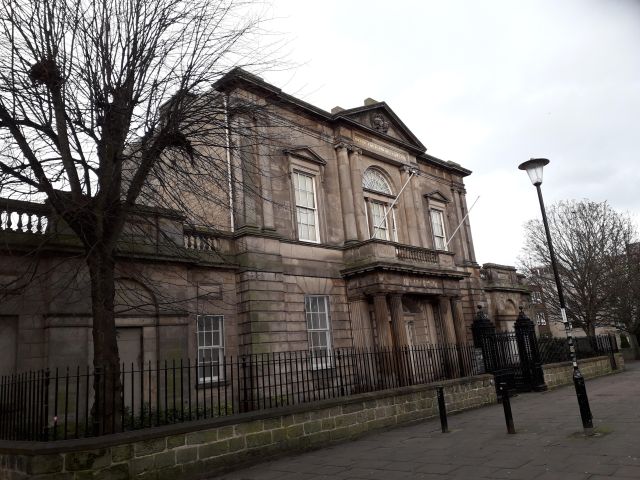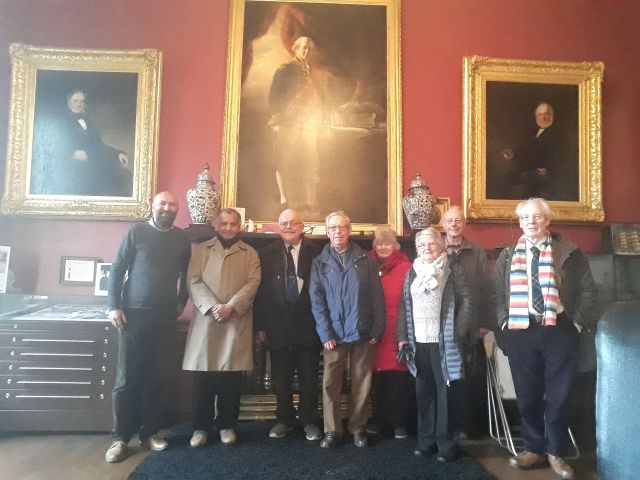The Edinburgh Visit to Trinity House

Leith was busy from medieval times with trades including coal exports, timber imports and whaling, and because life at sea was harsh the Incorporation of Masters and Mariners founded Trinity House in 1380 as a charitable foundation to assist seafarers who could no longer support themselves and the widows and children of those killed at sea. To pay for this, prime gilt was a levy on imports and exports which was enshrined in law by Mary Queen of Scots in 1566, and Trinity House also supported the establishment of local churches and the training and licensing of pilots who guided ships in and out of the Forth.
A sixteenth-century almshouse at the present location was becoming unstable, and the Masters commissioned architect Thomas Brown to build a new guild house completed in 1817 to provide a meeting-place for their growing membership and a secure home for their treasured possessions and papers. The exterior wall of the old almshouse was retained, also its vaults which had once housed a school. With a boardroom and records store downstairs, the upstairs housed the Convening Room with a long mahogany table which today displays Trinity House's eclectic collection including the housekeeper's badge, 1917 war instructions and a model of the Bell Rock lighthouse whose construction along with that on the Isle of May the Mariners had helped promote.
Over 150 paintings and drawings are in the possession of Trinity House, with some early views of the Port of Leith, several portraits by Sir Henry Raeburn including one of Admiral Adam Duncan, victor at Camperdown in 1797, and Scotland's largest painting entitled Vasco de Gama Encountering the Spirit of the Sea by Edinburgh artist David Scott which was purchased by public subscription in 1842, the first painting in Scotland to be acquired in this way.

The Edinburgh Branch with a portrait of Admiral Duncan
Nautical artefacts include many navigational instruments donated by Leith Nautical College when it closed in 1987. There are curiosities such as narwhal horns, a penguin egg collected by whalers near Leith Harbour in South Georgia and a ticket to witness the landing of George IV at Leith in 1822.
Trade declined with the coming of the railways and the change brought about by Empire to trading patterns which favoured west coast ports, while rival Trinity Houses in London, Hull and Newcastle eroded its role in controlling piloting. There was less need for Trinity House's charity functions with the coming of the welfare state, and in 2004 the building passed into the ownership of what is now Historic Environment Scotland. Today the emphasis is on community projects which have included the celebration of the building's bicentenary, but the Port's seafaring past is commemorated in a memorial service each November. Next up is this year's centenary of Leith merging with Edinburgh.